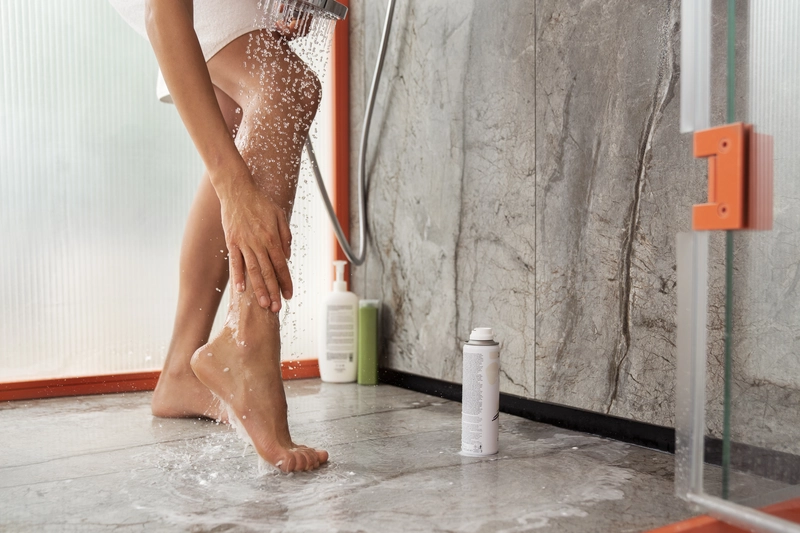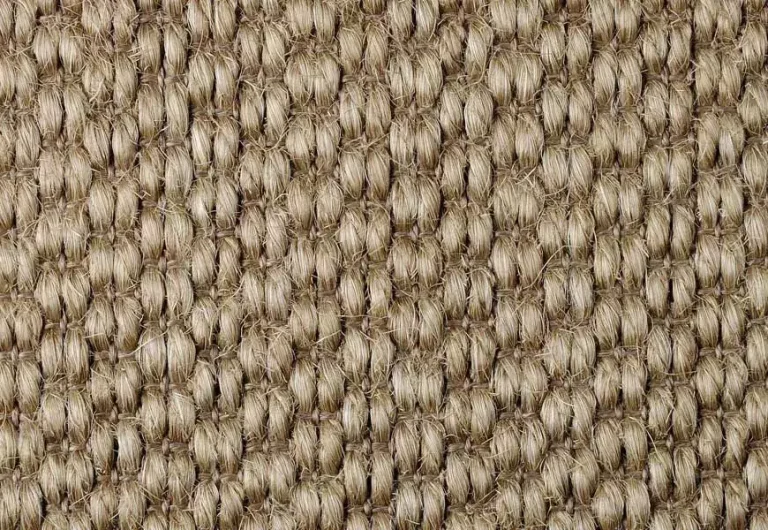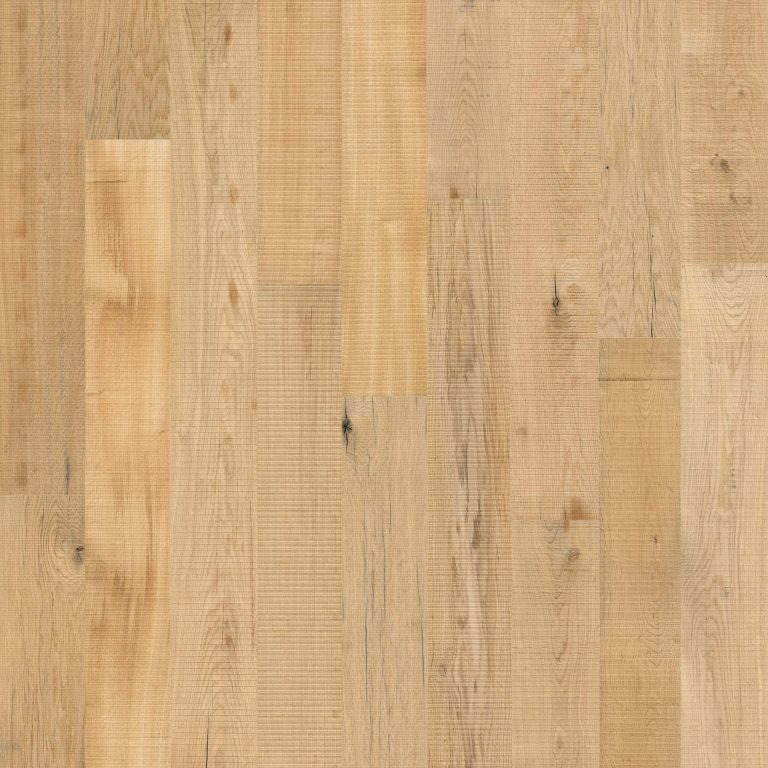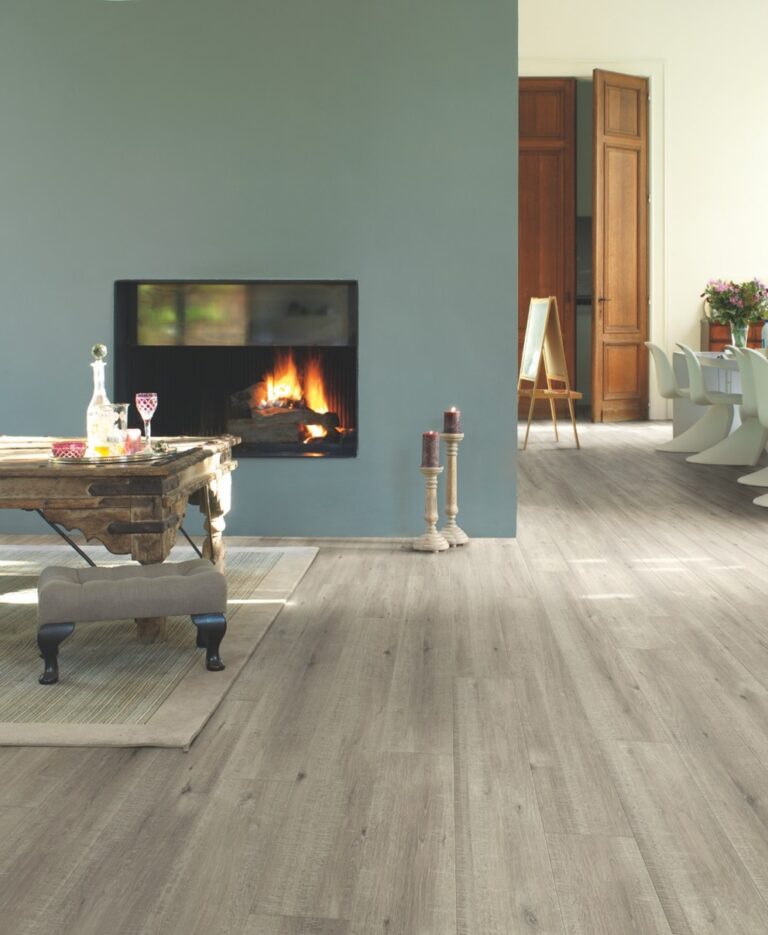Vinyl flooring has become a popular choice for many homeowners looking for waterproof flooring, but when it comes to wet rooms—especially with walk-in showers—questions often arise about its suitability. Actually, can you have vinyl flooring in a wet room?
Wet rooms, known for their open and waterproof designs, require bathroom flooring that can withstand moisture and offer slip resistant flooring options.
This piece explores whether vinyl flooring is a viable option for wet rooms, weighing its benefits and drawbacks, offering alternative flooring solutions like ceramic tiles and mosaic tiles, and providing design ideas for your home renovation.
Essential tips for installation and maintenance will also be provided, ensuring your wet room remains stylish and functional, while considering factors like underfloor heating and appropriate cleaning wet rooms strategies.
What Is Vinyl Flooring?
Vinyl flooring is a versatile and practical choice for various spaces, including kitchens, bathrooms, and especially wet rooms, due to its durability and ease of maintenance. It comes in various styles, including luxury vinyl, which mimics expensive materials like natural stone or wood, making it an excellent option for modern makeovers.
This type of flooring is typically made from polyvinyl chloride (PVC) and features a protective layer that keeps water and dirt at bay, thereby preventing water damage and ensuring longevity in environments where moisture is prevalent.


See product: Floorify Big Tiles Verona
What Is a Wet Room?
A wet room is a modern bathroom design concept that features a walk-in shower without the need for a traditional shower enclosure, allowing for a seamless and open aesthetic. Typically, wet rooms are designed with proper drainage systems that prevent water accumulation, making them ideal for spaces where you want to maximise accessibility and style.
The floor in a wet room is often designed to be water slip resistant to ensure safety, utilising materials such as tiles, luxury vinyl, or vinyl flooring that can withstand moisture and prevent water damage.
Can You Have Vinyl Flooring in a Wet Room?
Can vinyl flooring be used in wet areas? Using vinyl flooring in a wet room is not only possible but can also be a highly effective solution for flooring choices that require both durability and moisture resistance. This type of flooring is manufactured to be waterproof, making it ideal for areas exposed to high levels of humidity and moisture, such as bathrooms and walk-in showers.
When selecting vinyl flooring for wet rooms, it is essential to ensure that it has a high slip resistance rating to prevent accidents, as well as protecting against potential water damage that can occur over time.
The Benefits of Using Vinyl Flooring in a Wet Room
There are numerous benefits to using vinyl flooring in a wet room, making it a preferred choice for homeowners and designers alike. One of the most significant advantages is its waterproof properties, which protect against moisture-related issues, including mould and water damage that can arise in bathrooms. Vinyl flooring is often more cost-effective compared to alternatives like natural stone or ceramic tiles, while also offering a vast range of design options and ease of maintenance, which is crucial for high-traffic areas like wet rooms.
Vinyl flooring is not only easy to install, but it also provides a cushioned feel underfoot, making it comfortable for extended periods of standing. Homeowners will appreciate the simple installation process, which often requires minimal tools and can be completed in a fraction of the time compared to traditional options like tiles.
The design flexibility of vinyl allows for creative expressions that can be customised to suit any aesthetic, whether it be modern or rustic. This versatility gives it an edge over laminate flooring, which can sometimes lack the same authentic look or durability. When contrasting with tiles, vinyl’s warmth and comfort make it particularly inviting, especially in colder climates.
Below are some additional considerations:
- Waterproof capabilities that inhibit mould growth
- Cost-effectiveness compared to tiles
- Comfortable walking surface
- Wide range of designs available
The Drawbacks of Using Vinyl Flooring in a Wet Room
While vinyl flooring offers various advantages, there are also some drawbacks to consider when using it in a wet room that could influence your flooring choice. One potential issue is that, although vinyl is waterproof, it can still be susceptible to water damage if not properly sealed or installed correctly, especially around seams and edges.
Extreme heat can cause vinyl to warp or shrink, and it may not be as durable as alternatives like ceramic or natural stone tiles, which can be more resistant to wear and tear over time.
Homeowners must keep in mind that the installation process is crucial; a poorly executed job can lead to water pooling underneath the surface. To mitigate these risks, choosing high-quality materials and hiring experienced professionals is recommended.
Regular maintenance becomes essential; without proper care, vinyl can start to show its age more rapidly compared to other materials that boast longevity.
- Inspect seams and edges regularly for potential gaps.
- Use appropriate cleaning solutions to avoid damage.
- Consider temperature variations in the room to maintain the integrity of the vinyl.
By being mindful of these issues and adopting practical strategies, homeowners can enjoy the benefits of vinyl flooring while minimising potential pitfalls.
How to Install Vinyl Flooring in a Wet Room
Installing vinyl flooring in a wet room requires careful planning and execution to ensure that the end result is both functional and aesthetically pleasing.
The process typically begins with measuring and cutting the vinyl to fit the specified area accurately, followed by applying adhesives to the subfloor. Each step is essential to prevent issues such as water damage and ensure that the flooring adheres properly for long-lasting use.
There are some considerations to Installing Vinyl flooring in a wet room such as:
- Measure and Cut the Vinyl Flooring
- Apply Adhesive to the Subfloor
- Lay the Vinyl Flooring and Press Down Firmly
- Seal the Edges and Joints of the Flooring and Wet Room
How to Maintain Vinyl Flooring in a Wet Room
You may be wondering what happens to vinyl flooring when it gets wet. This type of flooring can become damaged more quickly if not properly maintained, especially when exposed to water too often.
Maintaining vinyl flooring in a wet room is essential for preserving its appearance and functionality, requiring specific cleaning techniques to manage moisture exposure effectively.
Regular maintenance practices, such as promptly cleaning spills and moisture, can prevent water damage and prolong the life of the flooring. Using mild cleaning products further ensures that the vinyl remains in excellent condition while also safeguarding against wear and tear over time.
1. Clean Up Spills and Moisture Immediately
Cleaning up spills and moisture immediately is a fundamental aspect of maintaining vinyl flooring in a wet room, as prolonged exposure can lead to water damage and mould growth. Having a routine in place for quickly addressing spills can significantly enhance the longevity of the flooring and keep it looking fresh and vibrant.
Regular checks for moisture accumulation can help prevent serious maintenance issues over time.
To effectively manage spills, it is crucial to keep specific tools and products readily available.
- Microfibre cloths can absorb moisture quickly without scratching surfaces.
- A gentle cleaning solution specifically designed for vinyl floors can help in removing any residual dirt or stains.
- A wet vacuum is invaluable for larger spills, ensuring no moisture is left behind.
Taking prompt action not only preserves the aesthetic quality but also maintains the structural integrity of the flooring. Utilising a hygrometer can provide valuable insights into fluctuations in humidity, enabling proactive measures to combat potential moisture problems before they escalate.
2. Use Mild Cleaning Products
Using mild cleaning products is crucial for maintaining vinyl flooring in a wet room, as harsh chemicals can damage the surface and lead to discolouration or deterioration. Opting for pH-balanced cleaners specifically designed for vinyl flooring will not only clean effectively but also protect the material from future wear. Regular maintenance with suitable products helps ensure that the vibrant appearance of your flooring remains intact.
Vinyl flooring owners should consider alternatives like gentle washing-up liquid mixed with warm water, which provides an effective cleaning solution without the risk of harm. There are commercially available cleaners that are particularly formulated for vinyl, such as:
- Black Diamond Ultimate Grout Cleaner, designed for deep cleaning without damaging the surface.
- Bona Hard-Surface Floor Cleaner, a convenient spray that effectively removes dirt while being safe for vinyl.
- Rejuvenate All Floors Restorer, which not only cleans but also restores the shine and lustre of vinyl flooring.
It’s essential to avoid products containing ammonia or bleach, as these can lead to significant wear and tear over time. Instead, choosing safe alternatives ensures that the long-term integrity of the flooring is preserved, helping to maintain its stylish appearance.
3. Avoid Harsh Chemicals
Avoiding harsh chemicals is essential for preserving the integrity of vinyl flooring, particularly in wet room environments where moisture exposure is high. Many common cleaning products contain strong ingredients that can strip away protective layers and lead to long-term damage. By committing to gentler cleaning alternatives, homeowners can protect their flooring from unnecessary wear and ensure that it remains a beautiful and functional part of their space.
It is crucial to understand that certain substances like ammonia, bleach, and abrasive cleaners can degrade vinyl surfaces, diminishing their shine and durability. These chemicals can also cause discolouration, which is often irreversible.
Instead of relying on those harsh agents, consider adopting safe cleaning practices. Some beneficial alternatives for your wet room flooring include:
- Using a mixture of warm water and mild washing-up liquid
- Employing a vinegar-water solution (with proper dilution)
- Opting for specially formulated vinyl floor cleaners
By embracing these gentler approaches, one not only ensures the longevity of their flooring but also promotes a healthier home environment free from the risks associated with toxic substances. Additionally, using natural substances like Microcement and Natural Stone can further reduce exposure to harmful chemicals.
4. Regularly Inspect for Damage and Repair as Needed
Regularly inspecting vinyl flooring for damage is a proactive approach to maintaining its appearance and functionality in a wet room, ensuring that minor issues are addressed before they escalate. Signs of wear, such as scratches, dents, or loose edges, should be repaired promptly to prevent further deterioration and prolong the life of the flooring. This routine maintenance helps keep the wet room looking pristine and functional over time.
Conducting inspections should ideally be part of a scheduled routine, allowing homeowners to spot potential problems early. Refer to HSE guidelines for best practices in maintaining safe and durable flooring.
Regular checks involve looking for specific signs, including discolouration, water damage, or separation at the seams. It’s also wise to inspect any high-traffic areas more frequently, as these are often more susceptible to wear. Including materials like Porcelain in high-traffic areas can also help in reducing wear and tear.
- Check for moisture accumulation, which can lead to mould and mildew, compromising the integrity of the flooring.
- Look under mats or rugs where hidden damage might occur without immediate notice.
Timely interventions, such as sealing small cracks or replacing damaged sections promptly, not only safeguard the aesthetic but also prevent costly replacements down the line. Porcelain and Natural Stone tiles are also excellent materials for repair and replacement in wet rooms.
Implementing these best practices ensures the durability and longevity of vinyl flooring, keeping it functional and visually appealing for years to come.
In conclusion, vinyl flooring can be a great option for wet rooms due to its water resistance, durability, and easy maintenance. However, proper installation and regular care are essential to ensure it lasts and maintains its appearance.
For high-quality vinyl flooring and expert fitting services, trust TEKA Flooring. With our professional team and extensive range of flooring options, we can help you create a stylish and functional wet room tailored to your needs. Contact TEKA Flooring today to get started on your next home project!
Read also:

































